Archive for the ‘MagnanMetz’ tag
Ivan Puig at MagnanMetz
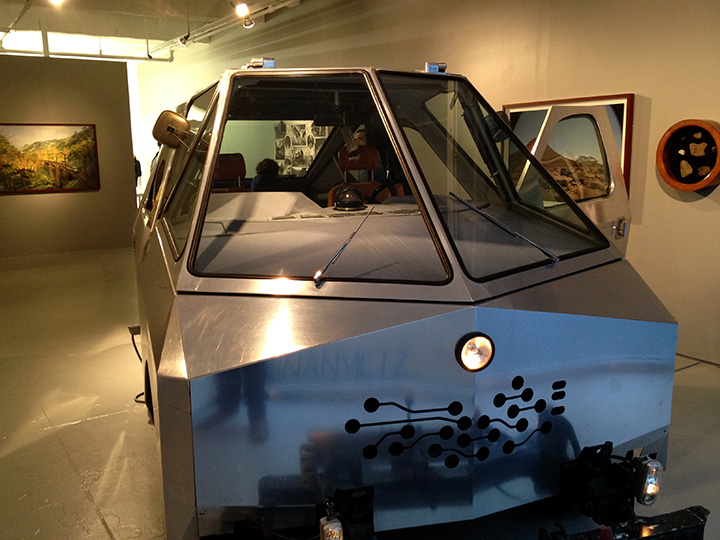
Ivan Puig’s SEFT-1 probe at MagnanMetz Gallery, Chelsea, NYC through March 9, 2013
Following the opening of Mexican artist Ivan Puig’s solo show at MagnanMetz gallery in New York City, Iggy and I visited with Puig and caught up regarding the SEFT-1 project (SEFT is an acronym for Sonda de Exploración Ferroviaria Tripulada or Manned Railway Exploration Probe). I first learned about the project in 2006 when Puig was just getting started on the concept of exploring abandoned railroads through out Mexico using a vehicle designed to travel the on the railroad tracks as well as car roads when necessary. Ivan was interested in seeing first hand what had happened to the communities that were built along the tracks and largely subsisted from the trains running throughout Mexico. Many of these communities are small rural populations that depended on the trains for various needs.
Puig spend a year traversing the abandoned railroad system with his half-brother Andrés Padilla Domene. As described on the exhibitions press release “The two set off from the National Museum of Art in Mexico City to begin their investigation of abandoned railways throughout Mexico and Ecuador, collecting evidence of their travels through photo, video and audio. Puig and Padilla Domene recorded contemporary landscapes, infrastructure and details of the everyday life of inhabitants to create a futuristic exploration of the countries’ pasts. Their progress has been consistently updated on the project’s website, www.seft1.com, where the public can follow the trajectory of the vehicle, view images of artifacts collected and listen to interviews with those they have met along the way.”

Ivan taking a picture of Iggy inside SEFT-1, a special treat as he was allowed into the sculpture
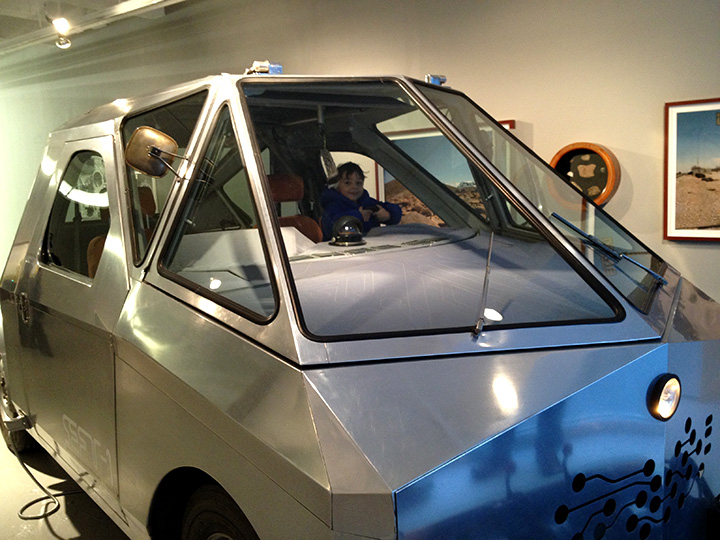
Iggy inside SEFT-1
It appears that the SEFT-1 will be traveling to the UK to explore abandoned railways throughout the British countryside sometime in the next year. By doing so, the artist will expand the archive of stories regarding locomotive technology and the communities surrounding the technology.
Duke Riley at MagnanMetz Gallery
I’ve become a big fan of Duke Riley’s work. Riley combines historical research, public intervention and skilled craft to generate narratives that are immediately engaging and subtly layered and complex.

I Photoshopped the drawings pictured in this post in order to better see the detail that Riley executes in his graphic work; they are worth seeing in person whenever possible. Although the only work documented in this post is graphic representation, Riley works across media and he has gotten the most attention for his public interventions, such as “After the Battle of Broolyn” for which he built a replica of an 18th Century U.S. Revolutionary submarine “The Turtle” and set out on the Hudson to attack a ship, the Queen Mary 2 docked off Manhattan. The NYC Coast Guard hauled Riley and his submarine from the Hudson.
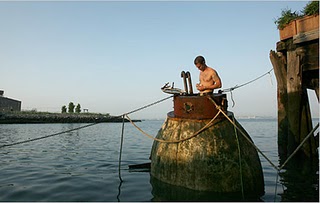
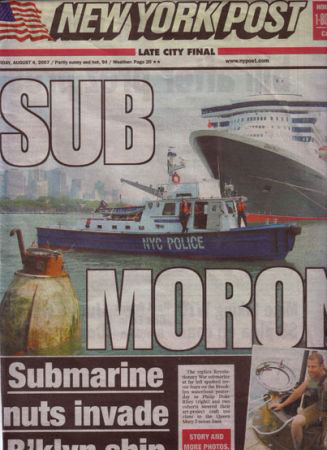
The latest exhibition presents two installations revolving around two separate historical narratives – the hobbo ballad “An Invitation to Lubberland” and Petty’s Island, a Citgo owned island in the Delaware River.
I didn’t have the patience to watch the videos portraying An Invitation to Lubberland which presented a late 19th century/ early 20th century dressed man running around underground tunnels. I was much more drawn to the second work presented “Reclaiming the Lost Kingdom of Laird” which consists of an intervention upon a Citgo fuel storage tank and a reclaiming of the island by the Laird Kingdom Liberation Army that published a letter to Hugo Chavez on the Huffington Post reclaiming Petty’s Island.
The project includes a giant portrait of Ralston Laird painted onto the top of a storage tank, interviews with the great great grandson of Ralston Laird, artifacts of the Laird family and beautiful drawings that re-imagine the island. (Ralston Laird was an Irish immigrant who once lived on Petty’s Island and claimed himself king of Petty’s Island.) Below are a few closeups of the large scale drawing pictured above.
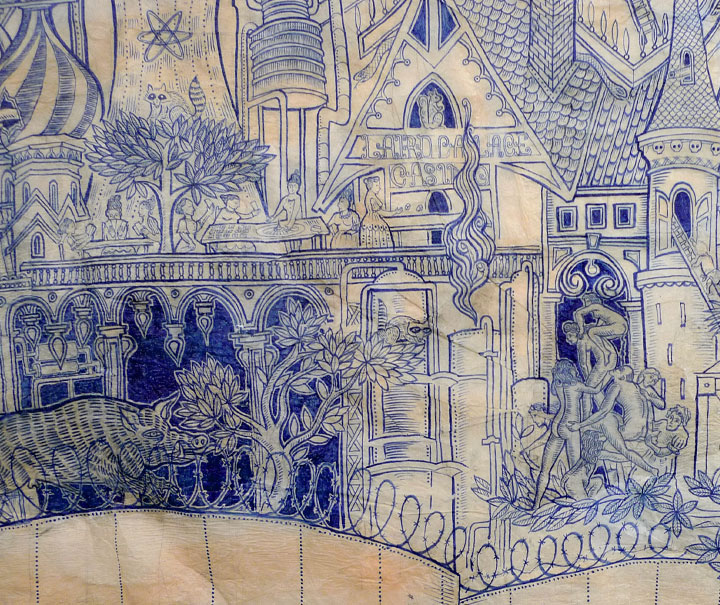
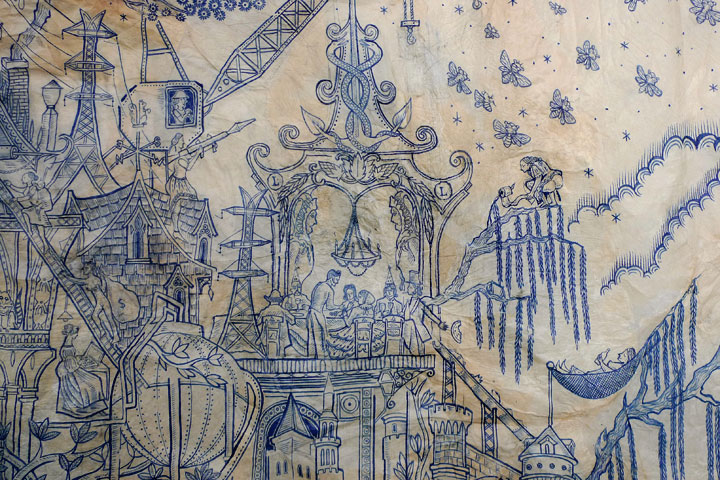
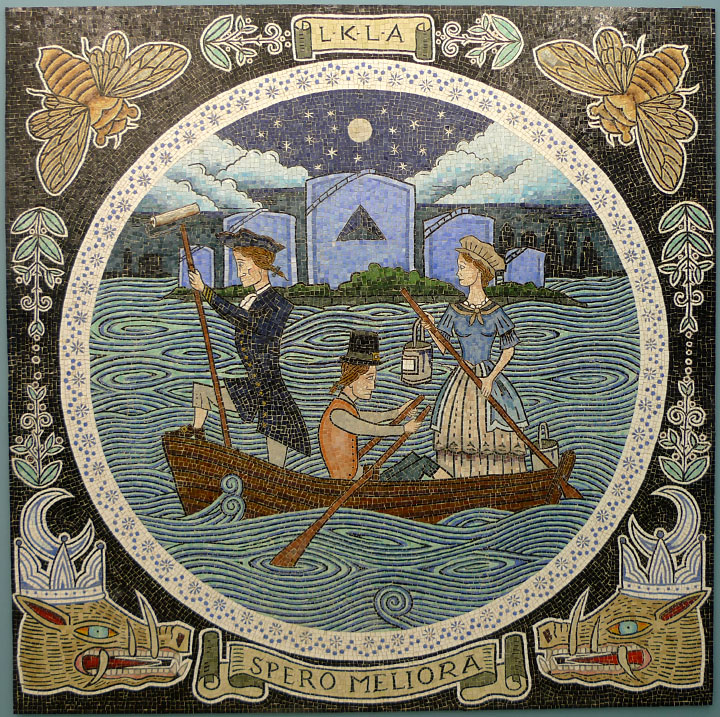
Duke Riley goes all out with his work. He ventures across boundaries to realize work that must be taken seriously due to the earnestness of execution. My only point of critique is that his graphic work is consistently in line with hipster subculture aesthetics informed by past eras of Americana and I would much rather see Riley establish his own visual language. Although the visual styles are generally informed by the era of the topic that he tackles it seems to be the same early 19th century U.S. graphic style that he recreates. Perhaps what I enjoy the most is that Riley really seems to enjoy his work thus the research leading to dense narratives that are conceptually and visually engaging.